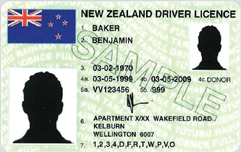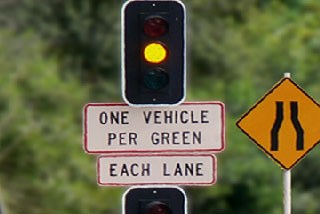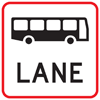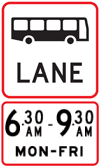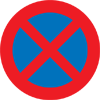
There are many of us who have never lived by the sea before moving to New Zealand, so let’s take a look at the things you need to do differently when living by the sea.
So why do we need to do anything differently as opposed to living in say Joburg? At the sea we have extra humidity / moisture in the air which can be very destructive if you don’t handle it correctly. In New Zealand we also get a lot more rain than we are used to in South Africa, which compounds the problem.
Kitchen
Spices – The humidity makes all the spices solidify inside the bottle so you need to keep your spices dry. You do this by keeping the lid closed at all times. When you do open the bottle to use the spice, don’t pour directly into the pot as the moisture from the boiling liquid in the pot gets trapped inside the bottle. Throw the spices / salt into your hand then into the pot. Immediately close the lid afterwards, don’t leave it standing open on the counter until you have finished cooking.
Bread – Don’t even bother with a bread tin in New Zealand. The bread tin will get mildew within a week or two. Your bread will only last a day or so. Keep your bread in the fridge
Bathroom
The bathroom is the worst room in the house as far as mildew is concerned. If you don’t adopt a daily routine you will soon find yourself battling this evil endlessly. Again the secret is to keep everything as dry as possible. Most modern homes have an extractor fan inside the bathroom which helps, but is not enough. To ensure your bathroom stays free of mildew, always squeegee the shower after using it. Immediately open the window to get a draft / breeze flowing through the bathroom to dry up the moisture on the walls as quickly as possible.
Hang your towels outside or in the warmest room in the house. Most modern houses also come equipped with heated towel rails. Yes they are to heat your towels so that it is nice and warm when you climb out the shower in winter, but they are also there to dry your towels after your shower. If you are battling to get your towels dry, then you can either tumble dry them every day or you can buy several sets of towels. Use the one towel the one day, then the other towel the next day. That way the towels have more time to dry out.
Rest of the inside of the house
To ensure the moisture doesn’t get trapped inside the house, open all windows in the house for at least 30 minutes every day in good weather. The longer the better. The breeze flowing through the house will help to dry out / blow away any trapped moisture. When it is raining outside however it is better to keep all the windows closed. That way the inside of the house acts as a heater to keep the moisture out.
You can also buy electric de-humidifiers which will dry out the air in the house. Buy one with the biggest tank possible as they fill up surprisingly quickly. If you are running a de-humidifier then it’s best to keep as many windows closed as possible otherwise the machine will fight a losing battle.
You can also buy de-humidifier tubs at your local $2 shop. They have little pellets inside them that collect the moisture in the air. When the pellets have all dissolved, then you simply open the tub up, pour out the water and pop the tub in the recycling. Keep one of these in every clothes cupboard, especially if you have manchester (linen) in the cupboard that doesn’t get used very often, eg., your winter blankets.
Air your mattresses every now and again as well as moisture can get trapped between the base and the mattress which then forms, you guessed it, mildew.
Curtains are famous moisture collectors as they are closest to the window. To help get the moisture out of them try and keep the curtains drawn during the warmest part of the day. It isn’t usually possible as most of us are out at work at that time of the day, so do it at least over weekends. If you are going out for the afternoon, draw the curtains before you leave. There are companies that specialise in treating the mildew on curtains if you do get mildew on them.
Garage
We all tend to store excess stuff in the garage that we don’t use. If you are doing this try and keep the items in sealed containers. Normal boxes still let the moisture in so are no good for storing anything long term. In an ideal world you would store items like curtains and blankets in vacuum sealed bags. You can buy these at various shops. You pop the clothing, etc., inside it, connect it to the vacuum cleaner which sucks out all the air. You then seal it. Now you have a bag that is not only free of moisture, but also compressed, saving you a lot of space.
Coat all your tools with either a light layer of oil or anti-rust to stop them from rusting. Never leave them outside in the weather.
If you have lots of things in your garage, then air the garage for at least 30 minutes at a time as often as possible, especially if your garage is under the house or if it hardly gets any sun.
Outside
Don’t leave any metal items outside, especially not in the rain. Park bicycles, barbeques and gardening tools in the garage or a tools shed when not in use.
If you do have metal items, like trampolines, that need to stay outside in the weather, then treat them with anti-rust as soon as you buy them and as necessary afterwards.
Driveways and walkways – these will build up mildew and algae especially over the winter, rainy, months. There are products on the market that will kill the algae and mildew, but it is mostly an expensive loosing battle. Rather buy yourself a waterblaster and clean the driveway and walkways with that when needed. They are as cheap as a few bottles of algaecide so will pay for itself quickly. When Spring starts you can see Kiwis all over spraying their driveways in preparation for the summer.
Washing
Getting the washing dry is a notoriously difficult task in New Zealand because the weather can change from blazing hot to pouring with rain to blazing hot in a matter of minutes. If the weather is good, then by all means hang it up on the line, but more often than not you won’t. Most Kiwis use the fold up clothes horses instead. That way if the sun is shining you can put the washing outside and if you see it is going to rain you can quickly bring it back inside again.
During the rainy winter months there are times when it isn’t possible to hang you washing outside. The best solution then is to put your clothes horses in the warmest room in the house. It is quite normal to see clothes horses in the windows of lounges, in master bedrooms or garages, wherever the clothes are going to get dry the quickest. You could of course use the tumble dryer as well, but that will quickly send your power bill through the roof.
Family
The extra moisture in the air not only affects our belongings, but us as well. New Zealand has one of the highest rates of child asthma because of moist houses. The World Health Organisation recommends that houses remain above 18 deg Celsius inside to avoid the buildup of moisture in the house. Temperatures below 16 deg C increase the risk of respiratory disease. Follow the guidelines above to help you keep you house warm and dry.
The extra moisture in the air can also cause you to sweat more so you may find that you will need to use an antiperspirant deodorant in New Zealand where you never needed to in South Africa
By the same token the moisture can make you have bad hair days – literally! Your hair can look frizzy, feel dry and become unmanageable. There isn’t that much you can do unfortunately. You can use one of the anti-frizz shampoos and use the deep conditioning treatments to soften up your hair again. Most of the people that I have spoken to though tend to opt for a shorter hair style.







